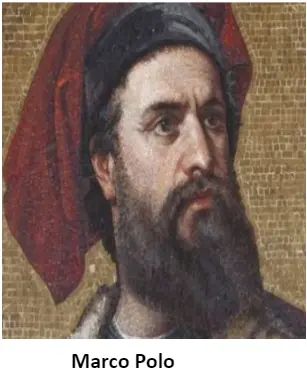![]() May 16, 2024
May 16, 2024
![]() 17457
17457
![]() 0
0
Marco Polo, a Venetian merchant, embarked on a remarkable journey along the Silk Road to Asia in the 13th century. His adventures, chronicled in ‘The Travels of Marco Polo,’ led him to India’s Coromandel Coast in 1292, where he explored the Tamil Pandya kingdom and encountered diverse customs and landscapes

| Must Read | |
| Current Affairs | Editorial Analysis |
| Upsc Notes | Upsc Blogs |
| NCERT Notes | Free Main Answer Writing |
Conclusion
Marco Polo’s travels offer a vivid glimpse into Indian culture and natural beauty. From the agricultural practices centred around rice cultivation to the vibrant wildlife and flora, his observations shed light on the customs, beliefs, and economic activities of southern India during his time.
| Related Articles | |
| AGRICULTURAL DEVELOPMENT | Reform Movements in Southern India & Social Transformation |
| Rise and Fall of the Later Pandya Dynasty: Triumphs, Struggles and Decline | BIODIVERSITY |
<div class="new-fform">
</div>
Latest Comments